The words “full moon” in many languages

It is said that there are more than 6,000 languages worldwide (this is hard to imagine) and it is a fascinating concept to think, there are probably as many words for “full moon”.
Here we begin our little journey to the full moon. A few words about the fascinating quest of the greater purpose, that includes the full moon circulating through our lives. In layman’s terms and not always scientific (astronomy experts – don’t look too closely!). We would like to wish you illuminating moments. Enjoy!


It is said that there are more than 6,000 languages worldwide (this is hard to imagine) and it is a fascinating concept to think, there are probably as many words for “full moon”.
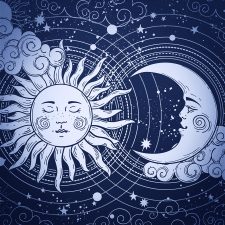
A full moon is when the Sun and the Moon are facing opposite, being in opposite direction from an Earth perspective.
This might feel astonishing if one imagines that the Moon is on one side, the Sun on the other and the Earth in between? Shouldn’t the Earth throw a shadow onto the Moon? Bingo – this is exactly what she does! But only when the Moon is exactly on the Earth orbit, the so called “ecliptic”. When this takes place, we speak of a lunar eclipse!

The Moon needs 27.33 days to circle around the Earth. Something that is also referred to as “sidereal time”. But because the Earth orbits the Sun, just like the Moon orbits the Earth, the Moon has to travel two further days in order to resume the same position to the Earth and Sun. This is then called the “sidereal time”. In order to determine the point of time of the reoccurring full moon, the sidereal time serves as basis.

We already know now that the moon month is mostly shorter than the calendar month, being on average approximately 29.5 days. If full moon falls on the first or second of a month, it is possible that another full moon occurs in the same month, for instance in July 2004:
Friday, 2 July 2004, 01:08:54 pm
Saturday, 31 July 2004, 08:05:06 pm
This event is also known as “blue moon”.

The answer is: “everywhere at the same time”. This refers to the so called Universal Time (UT) though, which is used for general astronomical events. We have already learnt that full moon is an astronomical event, where the moon, sun and the earth play a role by being in a specific position. So, full moon takes place at a specific time in the outer space. This point of time is specified by astronomers namely by the Universal Time.

There are multiple ways of approaching this question. If we look at it from a purely theoretical standpoint, we might be tempted to say that the full moon is infinitely short, since the phases of the moon are changing continuously. The moon is not yet quite full shortly before the full moon, and is already waning shortly afterwards.
However, there is a practical aspect that lets us quantify the full moon as a finite and measurable span of time: Since the Sun is significantly bigger than the Moon, its rays are able to reach just a little over half of the Moon’s surface. This means that the timespan in which the visible side of the Moon’s surface is irradiated (as seen from Earth) is longer than infinitely short.

Whether scientists, astrologers or esoterics, they agree on one thing: the moon influences earth and life on earth. For instance, it regulates the tides through its magnetism. Also continents feel the consequence of this magnetism and either raise or lower their position sometimes up to 26 cm.

In nature it is a known fact: for some animal species, mating takes place at full moon. However, the examples that can be found on this subject are rather simple. Full moon serves in some cases indirectly as the cause (for instance through the high water levels during the tides that the horseshoe crab uses to deposit its eggs) or also as the signal for both sexes of a species to begin at the exact same time to safeguard their future existence (a particular type of fly or also corals). It is understood that also wolves are led by full moon when it is time to mate.

… that people are looking for an argument at full moon or are especially happy …
… that if full moon is surrounded by a haze, a person dies …
… that you raise your hat three times to the moon (being a man) or you make a curtsey (being a woman), in order to protect yourself from misfortune until the next full moon …
… that whoever does not chink glasses with full moon at least once, does not deserve any happiness [Greek toast] …
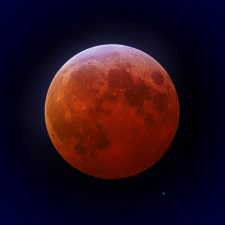
During a lunar eclipse, the Moon moves through the shadow of the Earth. Which means, that the Earth is positioned quite exactly between the Sun and Moon and casts its shadow onto the Moon. This is only possible at full moon and if some other requirements are met. Depending on whether the moon passes the partial or the core shadow of the Earth, we speak of a partial or total lunar eclipse.
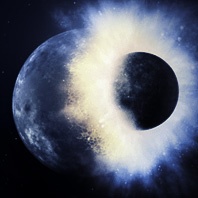
The Moon has not always been there. And although, no one has been present to observe its creation, scientists today, largely share the view that our Moon originates from a collision between Earth and another planet 4.5 billion years ago.
Our Earth – that looked completely different to how we know it to be today – had been circling with the planet Theia, which was about the size of our Mars, around the Sun. Some day, these two orbs clashed, produced an inconceivably powerful collision that totally destroyed Theia and catapulted an enormous amount of rocks into the orbit of Earth.

We would like to take a quick look at people who were born at the full moon. As to this, we remind you, contrary to widely spread opinion, that there are not more children being born at the full moon than at any other point in time during the lunar phases. Extensive studies over many decades have arrived at this result. Even though, many people may perceive or experience this differently – the numbers are unmistakably clear. We have already written an article about this »More births at full moon?«. So there are as many full moon children as there are new moon children etc.

Are we alone in the universe? Are there other intelligent forms of life in space or are we alone? These questions have been on mankind’s mind, since we consciously reflect our existence and raise our gaze toward the starlit sky.
With the beginning of space travel, there arose the idea, of sending messages to potential extraterrestrial life. The question, which information is suitable, a representative picture of the entire human race and their lives on planet Earth, is particularly exciting.
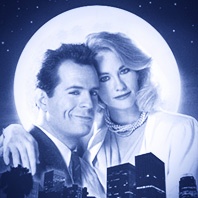
It’s been a few years ago, since we watched the TV series »Moonlighting« and could accompany Bruce Willis in the role of detective David Addison and Cybill Shepherd as the former top model Maddie Hayes, on a weekly chase of hoodlums. This was 1985, Bruce Willis’s start of his career, who had been chosen out of 1,000 applicants, and had already then an incomparably smug smile (and significantly more hair). The success of this series lies, next to the quick-witted dialogues, of course in the latent erotic relationship of the leading roles, who ingeniously never quite get it together.

It is well known the tides are caused by the tidal forces that are formed through gravity between the Earth and the Moon (and also between the Earth and the Sun). To put it simply, you can say that the Moon moves masses of ocean waters. At the full moon and the new moon, the Sun, the Moon and the Earth are roughly in alignment, hence, the forces are greater and cause so called spring tides, thus a slightly higher tide. Now, many people conclude that the Moon – and in particular the full moon – ought to move and influence us people accordingly, because our bodies consist mostly of water. This claim contains several errors in reasoning, which we would like to explain in the following.
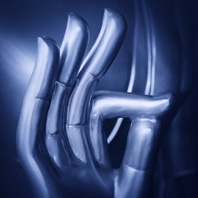
In June or July of each year, students commemorate their spiritual teachers (Gurus) with a big festival in India, but also in many parts of Asia. This festival is always celebrated at a full moon (Purnima):
3rd July 2012 [*]
22nd July 2013
12th July 2014
31st July 2015
In Hinduism, this day is also dedicated to the wise Vyasa who is connected to vital Indian writings, like the Vedas, a significant collection of religious scripts.
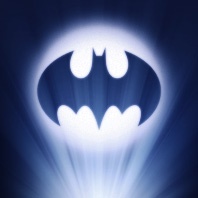
Who doesn’t know Batman, the comic hero who fights the sinister subjects of the big city at night as a bat man with super powers. Who has not seen him in movies or held one of the comic books in his hand? What we are mostly interested in, at this point, are not however, his impressive appearance, nor the trendy outfit, but the affinity to the full moon. Batman can be seen standing in front of the circular moon in countless images, his black cape blowing in the wind. And also the famous batman logo is always portrayed in connection with the moon, whether hovering against the light or as a full-moon-like light projection in the black night sky (the so-called »Bat-Signal«).
Let’s begin the New Year 2011 with the opening of the full moon blog. A true innovation to the full moon pages.

For everyone, who is not quite sure what a blog is, let’s say it is a kind of an Internet diary. The word »blog« is an abbreviation of »weblog«, which again derives from »web« (for Internet) and »logbook«, a term used in maritime shipping for recording daily events. Interestingly enough, it is mentioned in WIKIPEDIA that logbooks are of great importance in legal cases involving maritime commercial disputes, and therefore mandatory to be kept and not on a voluntary basis. As blogger (name of someone who writes in a blog), we certainly would not keep this rule, but encourage spontaneous participation and think it should be fun, and whenever possible, we will establish a connection to the full moon.
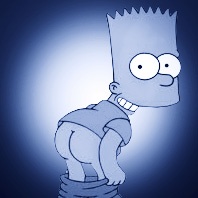
The human buttocks are being linked to the Moon at times, just like in the case of the so-called sexual position “full moon”. This is due to the large, round shape of the buttock cheeks, which could occasionally remind of the lunar globe when properly lit or observed from the correct angle.
If someone shows their bum publicly, he or she usually does so to break a socially accepted norm and to express their protest or contempt. Or simply because of the fun of it provoking other people. This “baring the behind” is called “mooning”. It derives from the verb “to moon”, which means “to expose to the (moon)light”.

Just like with all natives from different countries and continents, the Moon also plays an important role amongst African peoples in myths and stories. In this respect, we have already mentioned other peoples, for example the Native American Indians in America, the Inuit in the far north or the Aborigines in Australia.